Warren Feeney – 1 May, 2017
Drayton's refit encompassed a reconsideration of The Physics Room's earnest sobriety and its former division of spaces, making practical changes, and dividing its previously expansive and larger exhibition space into a series of more intimate and varied rooms. These measures were implemented with a deceptive lightness of touch; a knowing playfulness around decisions like the floor lighting down the central ‘hallway' of the gallery - now defined by a ‘European' style arch - framing its entrance.
In spite of being aware that the Physics Room’s new director Jamie Hanton opened the gallery’s exhibition schedule in February 2017 with a refit and make-over of its spaces, Reuben Moss’ Monuments and Other Reminders was still a surprising experience. Visiting The Physics Room in 2017 is different, now less of an encounter with a white cube gallery space and more like visiting the family home after parents have refurbished the lounge and bedrooms.
The Physics Room’s re-fit was conceived and delivered by Auckland-based artist Charlotte Drayton. The decision to do so seems both political and principled, announcing (under Hanton’s directorship) that one of his priorities is audience development, normalising the gallery as a people-centred space for visitors and communities. Drayton’s Like stepping from concrete to carpet transformed the gallery’s library, reception area and exhibition spaces, domesticating these previously austere environments into something more user-friendly. It comes as a welcome and refreshing move, and is an idea that should be seen as fundamental to all public and community spaces, and especially to galleries, both public and private.
Drayton’s refit encompassed a reconsideration of The Physics Room’s earnest sobriety and its former division of spaces, making practical changes, and dividing its previously expansive and larger exhibition space into a series of more intimate and varied rooms. She also demarcated the gallery’s library as a room where you could now browse and read, representing a distinct shift from its former assumed role (by this reviewer at least) as a storage area for books that sat out of reach behind its front-of-house desk. These measures were implemented with a deceptive lightness of touch; a knowing playfulness around decisions like the floor lighting down the central ‘hallway’ of the gallery - now defined by a ‘European’ style arch - framing its entrance.
As one of four contemporary art spaces funded by Creative New Zealand since the mid- to late 1990s - the others being Artspace, Enjoy, and the Blue Oyster Gallery - the mission statements of all four to date have consistently positioned ‘risk taking,’ ‘experimentation’ and ‘innovative works’ as relatively high on their agendas. Yet, more typical of the experience of these galleries has been their familiarity as a kind of homogeneous school of artist-run spaces. In its current incarnation, thanks to Drayton’s refurbishment, The Physics Room actually appears to have been experimenting and taking risks.
The division of works in different media from different places and time in Moss’ Monuments and other Reminders were appropriately accommodated in the separation of The Physics Room’s new spaces. Encompassing close to ten years of Moss’ work, (2009 to 2017), it felt like a well-considered survey of the artist’s performances and public installations from Dunedin in 2009 to recent digital animations.
The accompanying gallery handout gave due attention to Moss’ work as addressing the reality of life in the 21st century, particularly our experiences of the urban environment, its ‘underlying values and the processes that shape it - economic and political.’ Yet, while such propositions are relevant, of greater interest in Monuments and other Reminders was the wider context of the faith and failures of our desires and aspirations, evident in the redundancy and collapse of utopian ideologies and technology over the past thirty years.
Moss’ work ran the gamut of technology from the 1980s to the early 2000s. Trilogy: Future Factory Future Prison, The Existential Crises of the Individual in the Post Modern City and To Boldly Go, 2017, featured video tapes of popular sci-fi movies, family films and independent movies, layered over one another literally hundreds of time to the point of almost complete erasure. Of all the works in Monuments and other Reminders, it seemed the least successful. The gallery experience of fleeting and fragmented video-taped images, disappearing to be replaced by another, drew attention to the ephemeral nature of their subject and the technology, yet the point was made with an objectivity that never got past being a good idea on paper.
Not so however, Computer Chronicles, 2013, a weekly information programme about the changing realities and possibilities of computers, broadcast on television in the United States from 1981 to 2002. The unexpected optimism, spoken and unspoken in the early decade of Neo-liberalism, about the possibility of Silicon Valley, heralded the arrival of a new utopia, managing to sound like inspired ideology - yet the glaring redundancy of its promises was at the heart of the messages that Monuments and other Reminders was staring down throughout this exhibition.
Monuments (2009 - 2010), the earliest work, was no less relevant in touching upon the gap between the promises or possibilities and the reality. A video of the artist in Dunedin, High Tide Mark, 2009, sees Moss installing a park bench and playground equipment in public spaces. The video was supplemented and documented by front-page coverage in the Otago Daily Times that detailed the local council’s frustration with his uninvited and unsanctioned activity. What appeared to be an act of playfulness and generosity by Moss revealed differing perceptions about the use and potential of public space. These early works seem pertinent and contemporary, familiar to the current experience of life in Christchurch in 2017 as the city’s rebuild looks forward to the beginning of its sixth year.
Deathmatch: War of attrition between two artificial intelligences, 2016, is a computer game between terrorists and counter-terrorists set up by Moss, using modified computers to programme the game’s characters, fighting against one another in a never-ending duel. The game plays without the necessity or opportunity for human interaction. The gallery visitor’s sense of disconnection from the digital reality of Deathmatch alters from curious potential game player to detached and reflective observer. Moss’ manages to achieve this unanticipated shift in our expectations and relationship with such technology effortlessly. We only become aware of it after the event.
It is this ability to deliver such outcomes that made Monuments and Other Reminders a thoughtful and confronting experience.
Warren Feeney
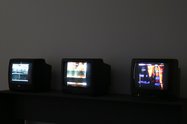
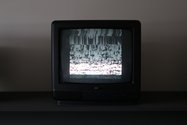
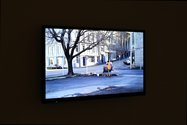
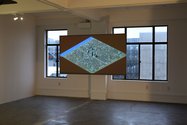
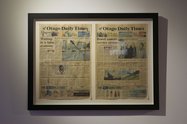
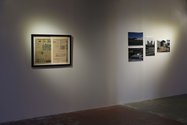
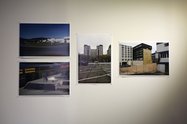
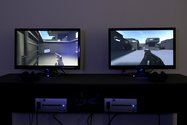
 Two Rooms presents a program of residencies and projects
Two Rooms presents a program of residencies and projects Advertising in this column
Advertising in this column
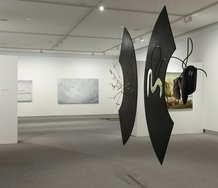
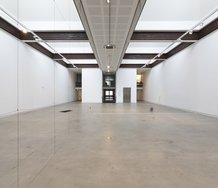

This Discussion has 0 comments.
Comment
Participate
Register to Participate.
Sign in
Sign in to an existing account.